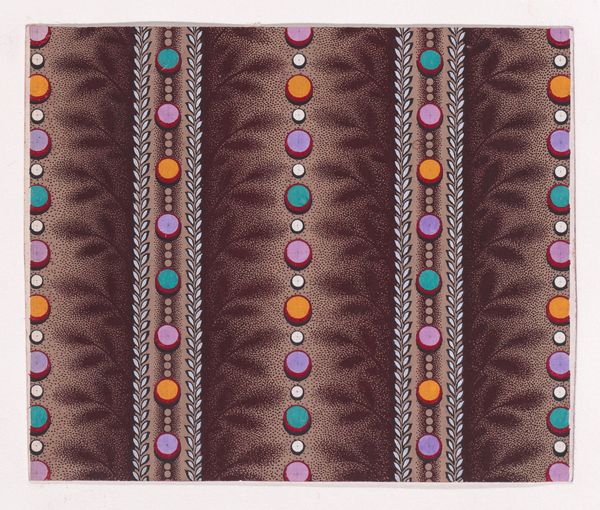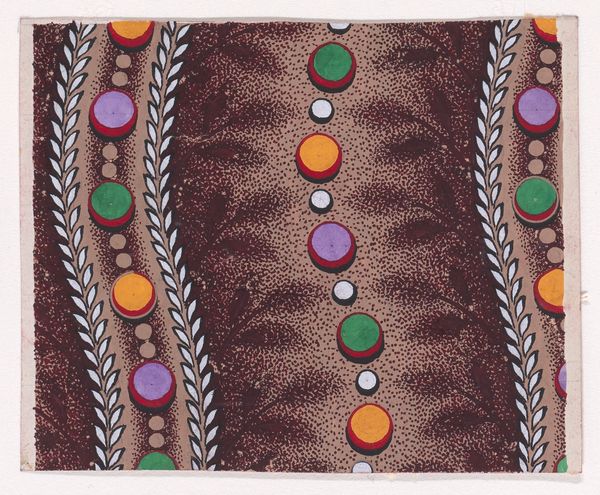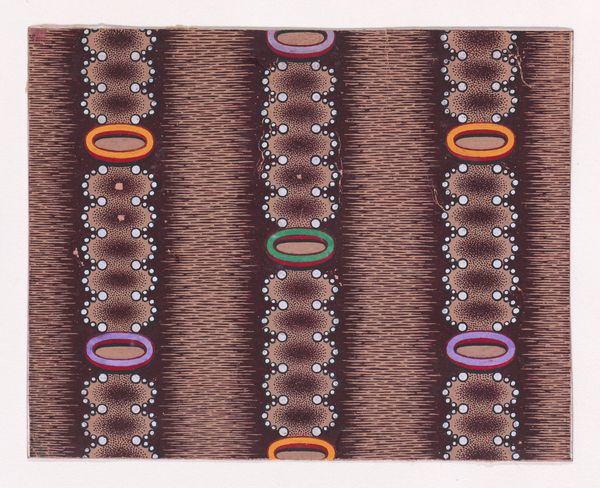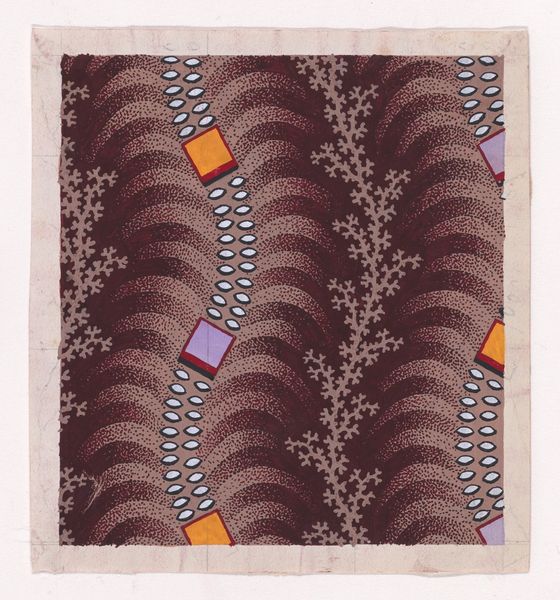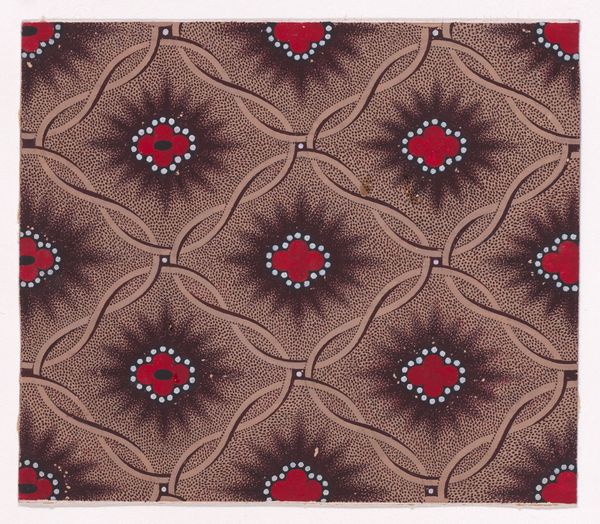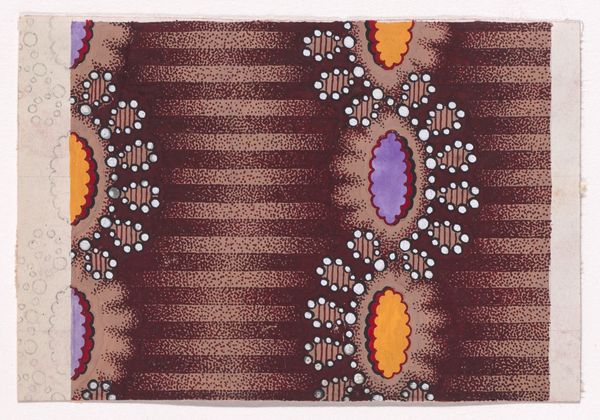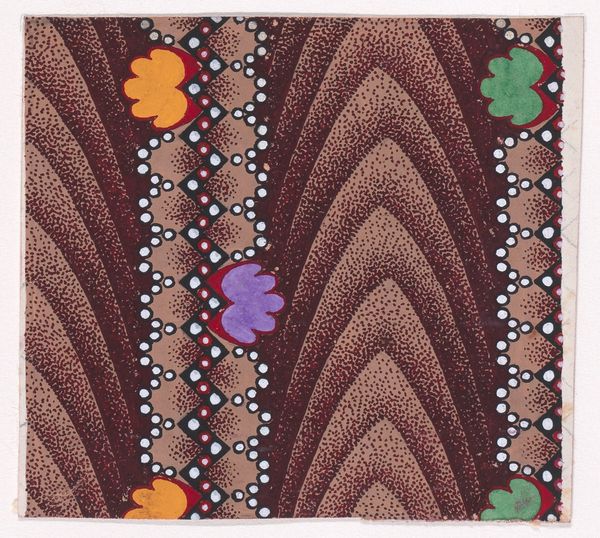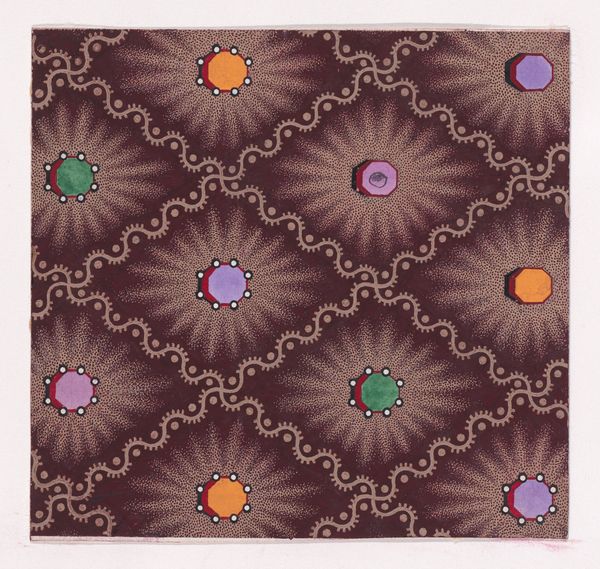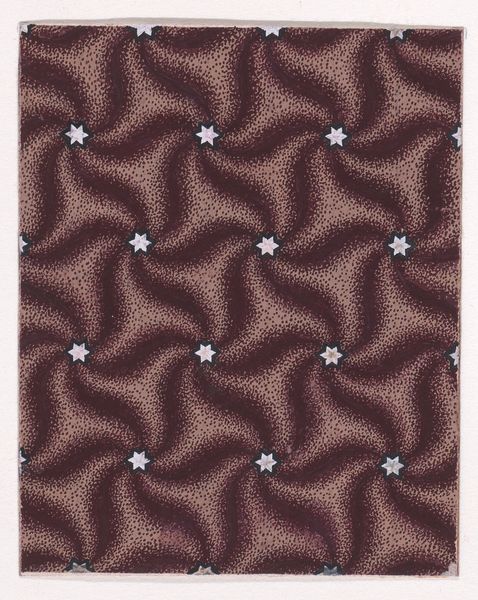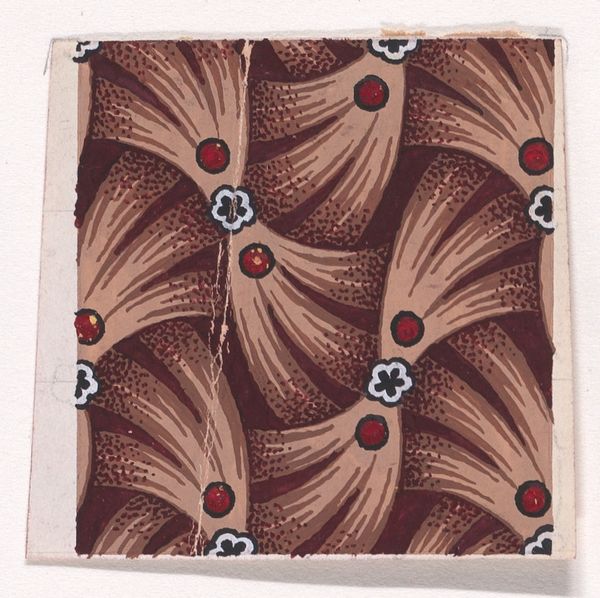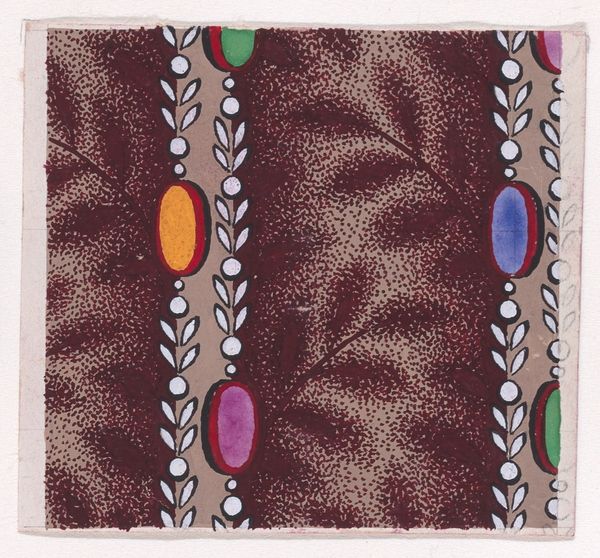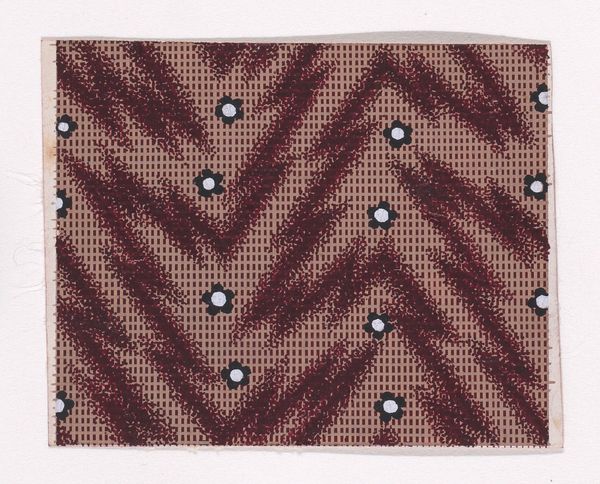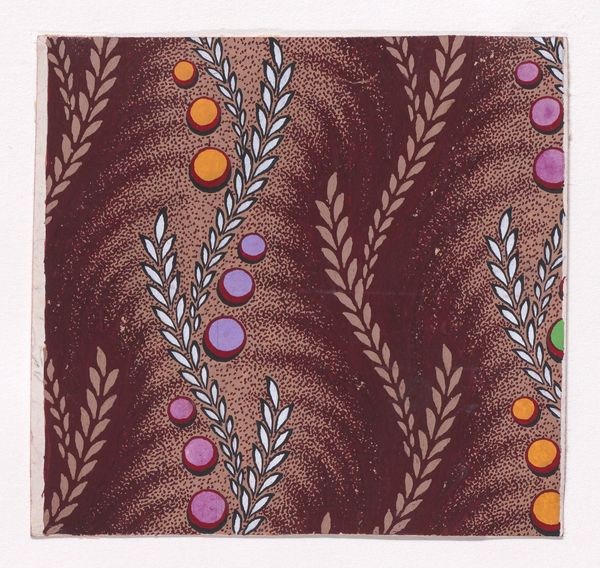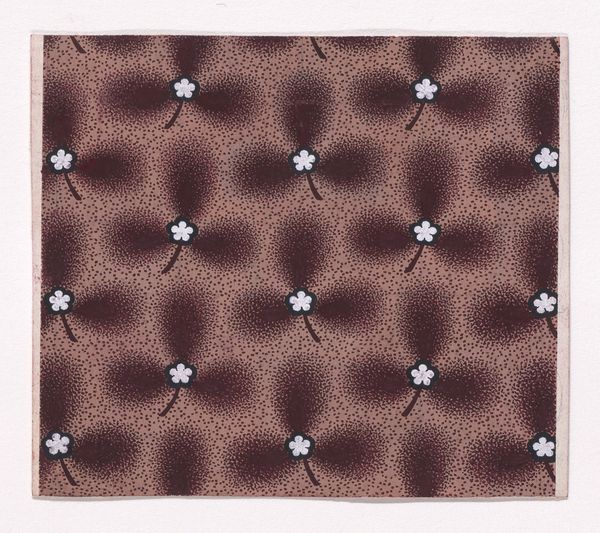
Textile Design with Alternating Vertical Twisting Strips of Dots and Garlands of Pearls and Rosettes over a Striped Background 1840
0:00
0:00
print, textile
# print
#
textile
#
geometric
#
textile design
Dimensions: Sheet: 4 5/8 × 4 3/4 in. (11.7 × 12 cm)
Copyright: Public Domain
Curator: Here we have an intriguing textile design from 1840, currently residing at the Metropolitan Museum of Art. The piece, created by an anonymous artist, features alternating vertical twisting strips of dots and garlands, complete with pearls and rosettes against a striped background. Editor: It’s immediately striking how intricate the design is, considering the likely limitations of textile printing at the time. I’m especially drawn to the way the dots and pearls catch the light, there is something playful but also luxurious in its suggestion of materials like velvet or even wood block prints, depending on what was available and what this simulates. Curator: It certainly speaks to a society embracing industrialization while still valuing intricate, handcrafted aesthetics. The repetitive pattern hints at the mechanization of textile production, yet the inclusion of organic forms like garlands suggests a desire to retain a connection to the natural world. Editor: And the labour involved! Think of the artisans meticulously carving those blocks, each print layered upon another to build up such texture and depth. It makes you consider who would have worn such a textile and the social implications of accessing this kind of design at that point in history. Curator: Absolutely. While mass production was on the rise, these more complex designs still represented a level of sophistication, if not necessarily overt wealth. It suggests a growing middle class with aspirations for beauty and refinement, influencing how textiles could communicate social and cultural status. Editor: The combination of geometric shapes with organic motifs also makes me think about shifting attitudes towards nature and industrial progress. Perhaps a visual tension, a dialogue between tradition and innovation inherent to this design? The materiality seems so linked to questions of artistry for the people designing it and accessing the prints. Curator: I think you've nailed it. The artwork encapsulates a pivotal moment when art, industry, and social identity were all undergoing significant transformation. These textile designs reflect our ever evolving relationship between visual experience and the society within which it lives. Editor: Looking at this closer reveals much more than I initially considered. The artist certainly left us a window to a changing material world and how patterns reveal this cultural moment through objects of artistry.
Comments
No comments
Be the first to comment and join the conversation on the ultimate creative platform.
